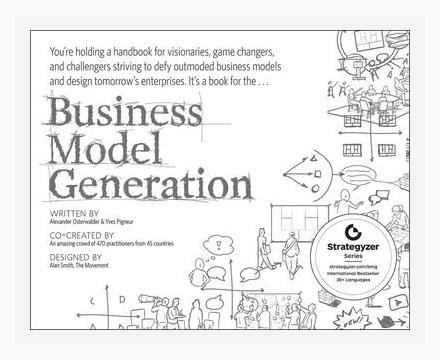Business StrategySWOT Analysis
Introduction
Olivia Jackson’s “Business Strategy: SWOT Analysis Illustrated” is an in-depth guide that provides a comprehensive understanding of the SWOT (Strengths, Weaknesses, Opportunities, Threats) analysis framework. It aims to teach business professionals how to effectively use SWOT analysis to inform strategic decision-making and ensure sustainable competitive advantage.
1. Understanding SWOT Analysis
Jackson opens with a detailed explanation of the SWOT framework, dissecting each component:
– Strengths: Internal attributes and resources that support a successful outcome.
– Weaknesses: Internal factors that could hinder progress.
– Opportunities: External factors the organization can capitalize on.
– Threats: External challenges that could cause trouble for the organization.
Actionable Advice:
– Conduct an internal resource audit to identify areas of strength and weakness regularly.
2. Conducting a SWOT Analysis
Jackson outlines the steps to conducting a thorough SWOT analysis:
1. Assemble a Diverse Team: Engage employees from various departments.
2. Collect Data: Use market research, internal audits, and competitor analysis.
3. Brainstorm: Facilitate a brainstorming session to list down all points under each SWOT category.
4. Prioritize: Rank the importance of each point based on its impact and feasibility.
Example:
A retail company conducts a SWOT analysis and discovers its strength in customer service, a weakness in online presence, an opportunity in the rising trend of e-commerce, and a threat from new market entrants.
Actionable Advice:
– Schedule monthly SWOT review meetings to adapt strategies to an ever-changing market environment.
3. Translating SWOT Analysis to Strategy
Jackson emphasizes the importance of moving from analysis to action:
– Leveraging Strengths: To capitalize on existing advantages.
– Mitigating Weaknesses: To minimize the negative impact.
– Seizing Opportunities: To explore new market potentials.
– Defending Against Threats: To prepare contingency plans.
Example:
A tech firm discovers through SWOT that its strength lies in innovation (strength), but it lacks scalability (weakness). It identifies a market desire for smart home products (opportunity) and competition from big tech companies (threat).
Actionable Advice:
– Develop a strategic plan that focuses on strengthening scalability while driving innovation in smart home products to differentiate from competitors.
4. Case Studies and Real-life Applications
Jackson enriches the book with real-life case studies:
– Case Study: Starbucks: Identifies strengths in brand loyalty and weaknesses in product range. Recognizes opportunities in global expansion and threats from local coffee chains.
– Application: Starbucks launches new product lines and expands its global footprint, while investing in localized strategies to combat market-specific threats.
Actionable Advice:
– Regularly benchmark against industry leaders to identify best practices and potential areas for improvement.
5. SWOT Analysis for Different Business Scenarios
Jackson discusses SWOT analysis application across various scenarios:
– Startups: Identify core competitive advantages and market gaps.
– Mature Companies: Evaluate the existing portfolio and identify diversification opportunities.
– Crisis Management: Understand risks and develop mitigation strategies.
Example:
A startup in renewable energy uses SWOT to highlight a strength in innovation and a weakness in market penetration. They spot the opportunity in governmental green initiatives and a threat in fluctuating resource costs.
Actionable Advice:
– For a startup, focus on relationship-building with stakeholders to gain market entry and leverage government incentives.
6. Using Technology in SWOT Analysis
Jackson explores how technology can enhance SWOT analysis:
– SWOT Software Tools: These can assist in data collection, aggregation, and visualization.
– Big Data Analytics: Helps in identifying trends and insights.
– Automation: Speed up the processing and updating of SWOT data.
Example:
A manufacturing company uses SWOT software to monitor production efficiency (strength), identify bottlenecks (weakness), explore the potential for automation (opportunity), and prepare for fluctuating raw material costs (threat).
Actionable Advice:
– Invest in SWOT-specific software tools to streamline data analysis and track performance metrics effectively.
7. SWOT Analysis in Marketing Strategies
Jackson highlights the integration of SWOT in marketing:
– Identifying Target Markets: Use SWOT to align marketing strategies with strengths and opportunities.
– Competitor Analysis: Understand competitive positioning.
– Product Development: Guide innovation and product differentiation based on market needs.
Example:
A beverage brand recognizes its broad distribution network (strength) but weak social media presence (weakness). It identifies the opportunity in healthy drinks (opportunity) and a threat in changing consumer preferences.
Actionable Advice:
– Develop targeted marketing campaigns that highlight the strength of distribution while addressing social media weaknesses through enhanced digital strategies.
8. Monitoring and Reviewing SWOT Analysis
Jackson explains the necessity of regular review:
– Dynamic Environment: Markets and internal conditions change.
– Continuous Improvement: Constant evaluation can lead to strategic pivots.
– Feedback Loop: Engage stakeholders for input and iterative improvements.
Example:
A financial consultancy firm conducts quarterly SWOT reviews, allowing it to adapt to regulatory changes (threat) and capitalize on emerging markets (opportunity).
Actionable Advice:
– Set up a continuous feedback mechanism to refine SWOT analysis periodically, ensuring the strategy remains relevant and effective.
Conclusion
In “Business Strategy: SWOT Analysis Illustrated,” Olivia Jackson delivers an essential toolkit for business professionals. The book demystifies the SWOT framework and provides actionable insights and real-life examples to ensure readers understand and can implement SWOT analysis in their strategic planning effectively. Her emphasis on practical application, regular reviews, and leveraging technology is particularly invaluable in today’s fast-paced business environment.
Key Takeaways
- Understand Each Component: Deeply analyze strengths, weaknesses, opportunities, and threats.
- Strategic Implementation: Move from analysis to actionable strategies.
- Regular Reviews: Continuously adapt to changing circumstances.
- Utilize Technology: Leverage software and data analytics.
- Cross-functional Integration: Apply SWOT in various business scenarios from startups to crisis management.
By following Jackson’s comprehensive guide, business leaders can create robust strategies, overcome challenges, and seize opportunities, thereby driving sustainable growth and success.
